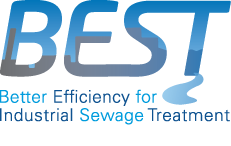4) New wastewater treatment line with calcium silicate filtering
The investment of Doruchow Commune in Project BEST
Report on the investment
Report of the installation and functioning of the investment, LINK TO THE REPORT
Summary
Watch an interview with Project manager Andrzej Erwinski (before the investment was realized):
Watch a video on the finalized treatment line:
In the BEST project, the Doruchów Commune invested in a separate treatment line for the sewage from meat industry facilities in the area. In this small commune, industrial wastewater from local meat processing industry comprises even 80% of the total sewage and the old municipal wastewater treatment plant (WWTP) operating only biological treatment and lacking phosphorus removal was too small and inefficient to handle these large amounts of industrial sewage. Furthermore, the industrial companies in the area have no modern pre-treatment and the amount of effluents fluctuates remarkably causing further challenges to the WWTP.
The new treatment line was built next to the old treatment plant and it comprises biological treatment, clarification, and phosphorus filtering using calcium silicate as a filtering media. Used calcium silicate can be utilized as a fertilize
Doruchow Commune and wastewater treatment plant
Doruchów is a small commune in southwestern Poland with approximately 5 500 inhabitants. The commune is mainly agricultural area, but there are also three meat processing companies producing nutrient-rich effluents.
The commune is currently operating a small biological waste water treatment plant (WWTP) based on activated sludge, but without chemical phosphorus removal. The treatment plant needs modernization and more capacity to be able to function effectively. The WWTP Doruchów is treating both municipal and industrial waste waters. Currently, the industrial companies in the area have no modern pre-treatment and the amount of effluents fluctuates remarkably causing challenges to the WWTP. Although the companies are rather small, their effluents comprise a large share, up to 80 %, of the total waste water load entering WWTP.



